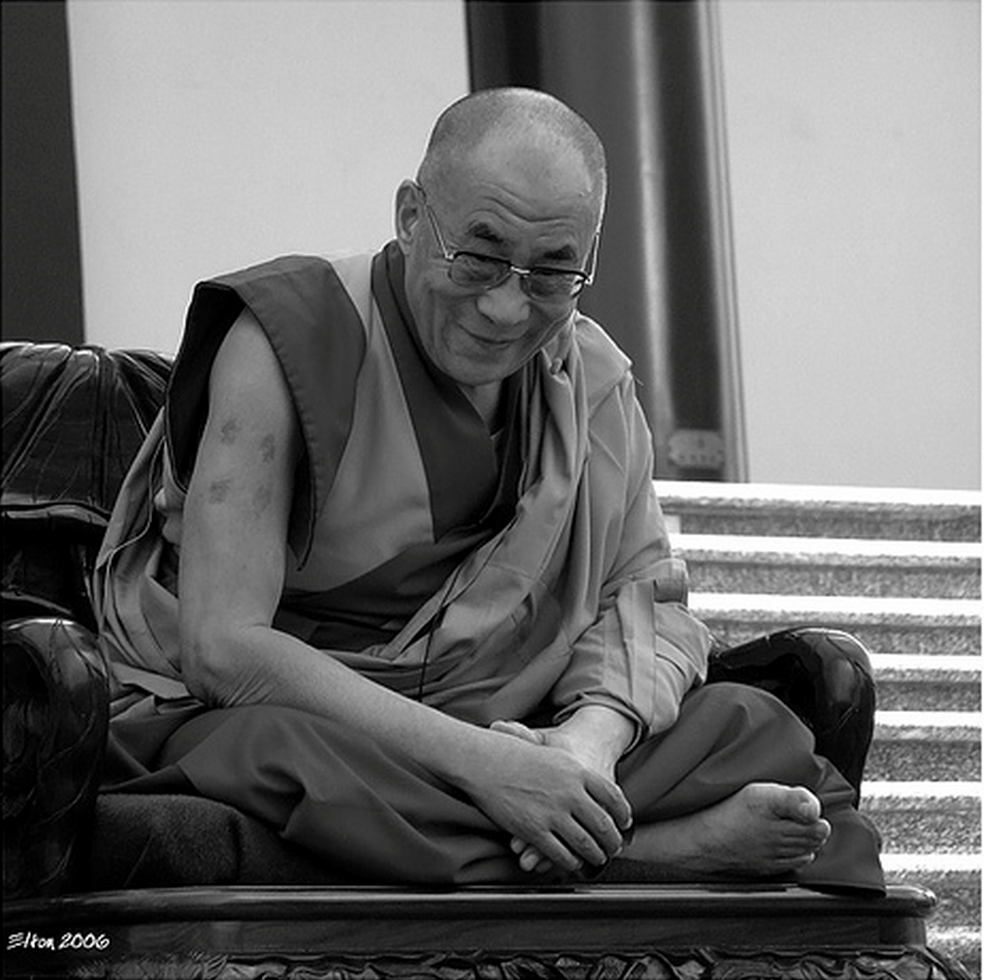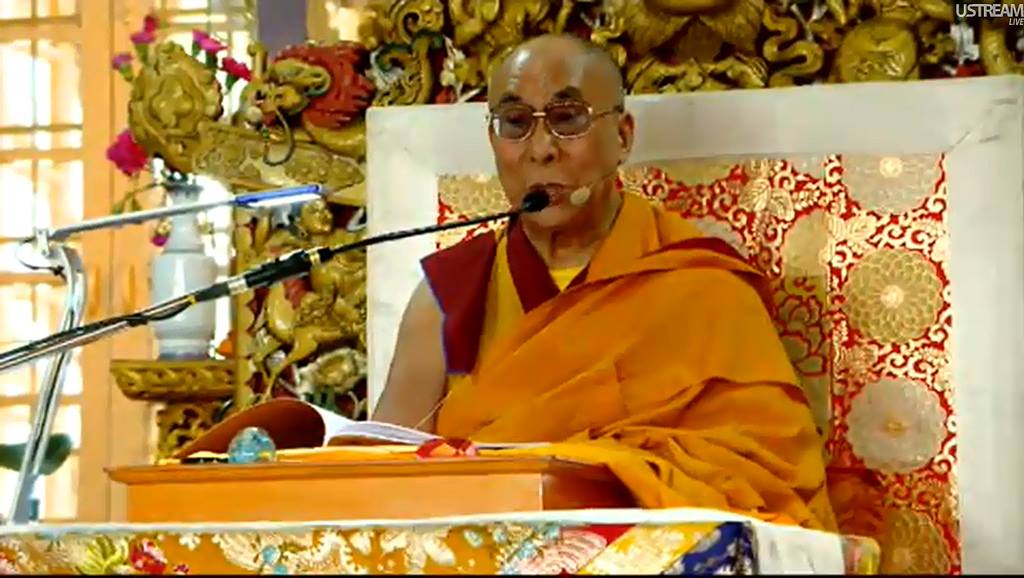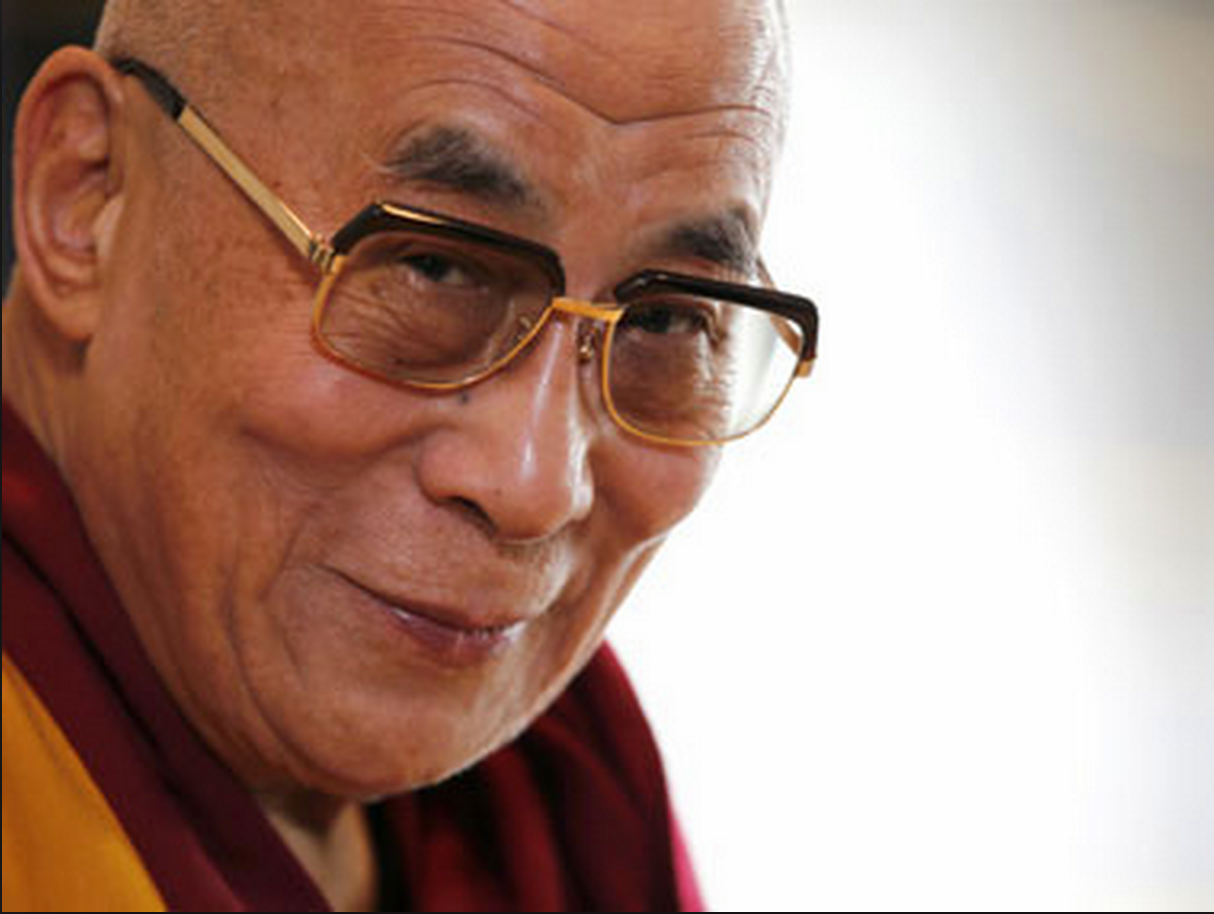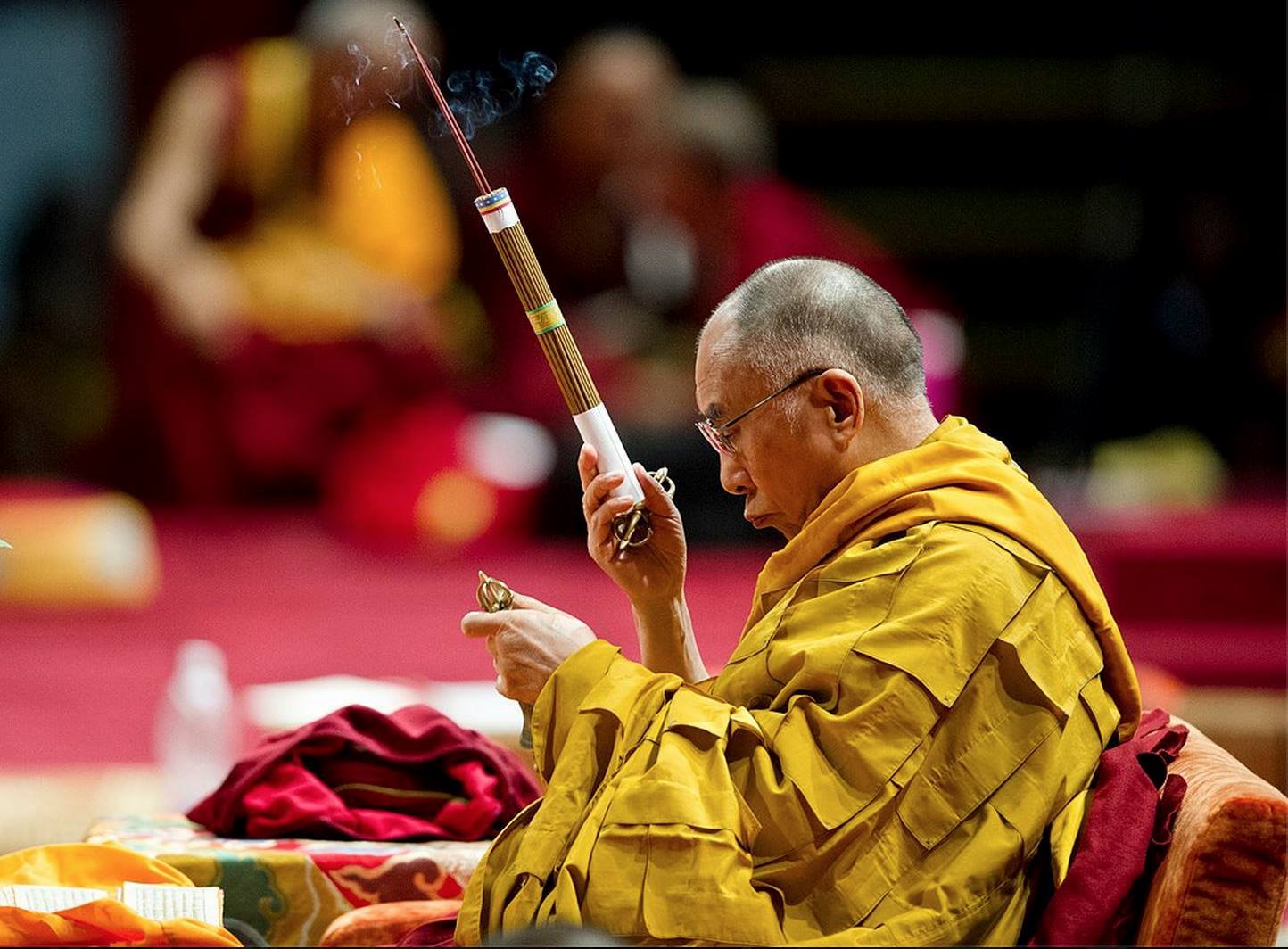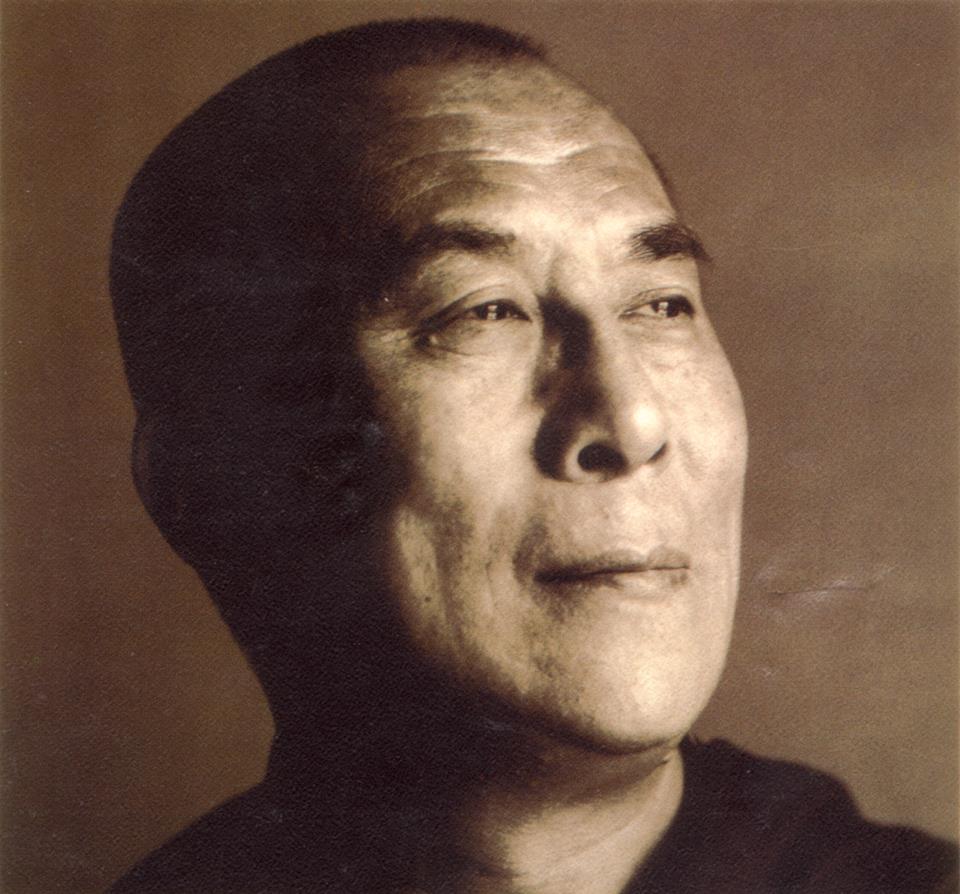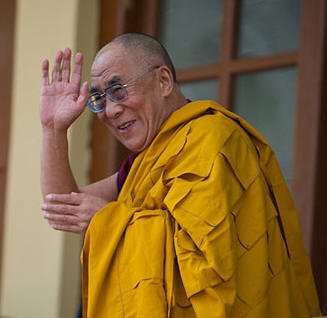
His Holiness the Dalai Lama: The causal process of pain/pleasure or happiness/suffering is understood in terms of a particular kind of process.
3 His Holiness The Dalai Lama: Commentary on The Precious Garland “Ratnavali” by Nagarjuna, UCLA Los Angeles June 5-8, 1997.
The Dalai Lama discusses suffering and happiness, the Four Noble Truths, karma, and motivation.
The second half of the day’s teachings were opened with sutra chanting in Japanese, led by Rev. Noriaki Ito, Abbot of Higashi Hongwanjii Temple in Los Angeles.
Tenzin Gyatso, His Holiness the Dalai Lama. I would like to express my appreciation to the members of the Japanese Buddhist sangha for their wonderful recitation. I was not able to follow the meaning of the verses, though. [Laugher.]
Now, I will resume our discussion where we left in the morning session.
We were talking about beginninglessness and the continuum of consciousness and also the continuum of the individual being, which is designated upon the basis of this beginningless continuum of consciousness or mind.
However, in the Buddhist schools of thought, as far as whether or not there is a possibility to an end of this continuum, all Buddhists schools converge on the point that it is beginningless. Continue reading

